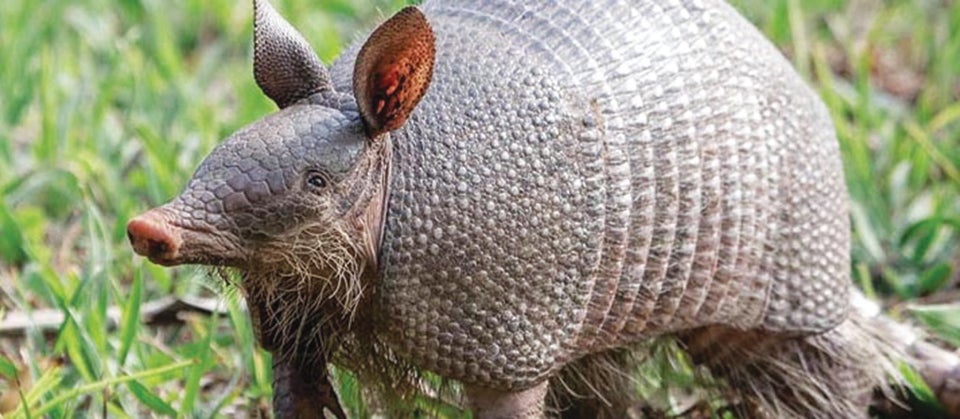Armadillo sightings becoming more common
Published 1:04 pm Tuesday, April 25, 2023
|
Getting your Trinity Audio player ready...
|
 My interactions with armadillos over 66 years have been limited to one occasion, about 10 years ago, when I was turkey hunting in the swamps of the Little Salkehatchie River in South Carolina’s Lowcountry. We had come out of the woods and were standing by the pickup trucks, planning where to find a steak and baked potato for dinner when an armadillo stumbled out of the woods.
My interactions with armadillos over 66 years have been limited to one occasion, about 10 years ago, when I was turkey hunting in the swamps of the Little Salkehatchie River in South Carolina’s Lowcountry. We had come out of the woods and were standing by the pickup trucks, planning where to find a steak and baked potato for dinner when an armadillo stumbled out of the woods.
One of my companions quickly retrieved a pistol from his vehicle and gave it, quite literally, his best shot, but the little animal – understanding it was in danger – quickly retreated into the swamp.
My companion spit disgustedly on the dirt and disparaged the armadillo as “possum on the half-shell.” He considered armadillos as quite the pests, “varmint” being a word he also used.
Blame climate change, global warming, whatever. The N.C. Wildlife Resources Commission said that armadillos – nine-banded armadillos, to be specific – are invading the Tarheel State from the south, largely because of shorter periods of below-freezing weather the past several years.
The commission wants anyone who sees an armadillo to report it by emailing armadillo@ncwildlife.org, including a photo (if available), and details on when you saw the armadillo – date and time, location – in order that biologists can map the expansion of the armadillo into North Carolina. You can also participate in the NC Armadillo project at https://www.inaturalist.org/projects/nc-armadillo to track observations across the state.
Armadillos are members of the same family as anteaters and sloths. There are nine species of armadillos, but only the nine-banded armadillo lives in the Southeast. Native to Central America and South America, they were first recorded in Texas in 1849, crossed the Mississippi River in the early 1940s and appeared in western Tennessee in the 1980s, according to the commission.
The first confirmed sighting in North Carolina was in 2007 in Macon County. The commission has since received 898 reports in 70 counties, the large majority coming from the extreme western mountains along the state’s border with Georgia.
They feed mostly on invertebrates, detecting grubs, insects and worms with their sense of smell. They will dig burrows, and a single armadillo may have up to a dozen burrows, which can result in some big-time property damage in areas where they have established a toehold. When foraging, they will dig holes 1 to 3 inches deep and 3 to 5 inches wide.
Armadillos are not considered a game species and can be hunted year-round.
Turkey harvest up
Hunters in North Carolina are on pace to have one of the best spring turkey seasons ever, according to statistics from the N.C. Wildlife Resources Commission.
Through the week-long youth season and the first nine days of the statewide open season, hunters have reported tagging 14,375 turkeys, which is about 700 better than the average harvest over the past three seasons through the same date.
The commission’s up-to-date harvest figures through this past Monday indicated that hunters have taken 12,888 long bearded gobblers and 1,487 jakes. The average over the past three seasons – the three highest harvests on record – is 11,594 longbeards and 2,049 jakes.
Hunters in the big, southeastern agricultural counties are having the best seasons: Duplin County hunters have taken 496 birds through this past Monday, followed by Pender (433), Bladen (396), Sampson (373) and Brunswick (345).
Hunters in northwest North Carolina, overall, aren’t keeping pace with the harvest over the past three seasons; most counties are showing slightly fewer birds taken, with the exception of Stokes, Ashe, Wilkes and Watauga counties.
Hunters in Forsyth County have taken 67 birds (down from 77 at the same time last season), hunters in Davie County have taken 66 birds (down from 85), hunters in Rowan are at 168 (up from 162), in Stanly 161 (up from 139), in Anson 175 (up from 171), in Montgomery 123 (down from 149).
The spring turkey season runs through Saturday, May 6.





